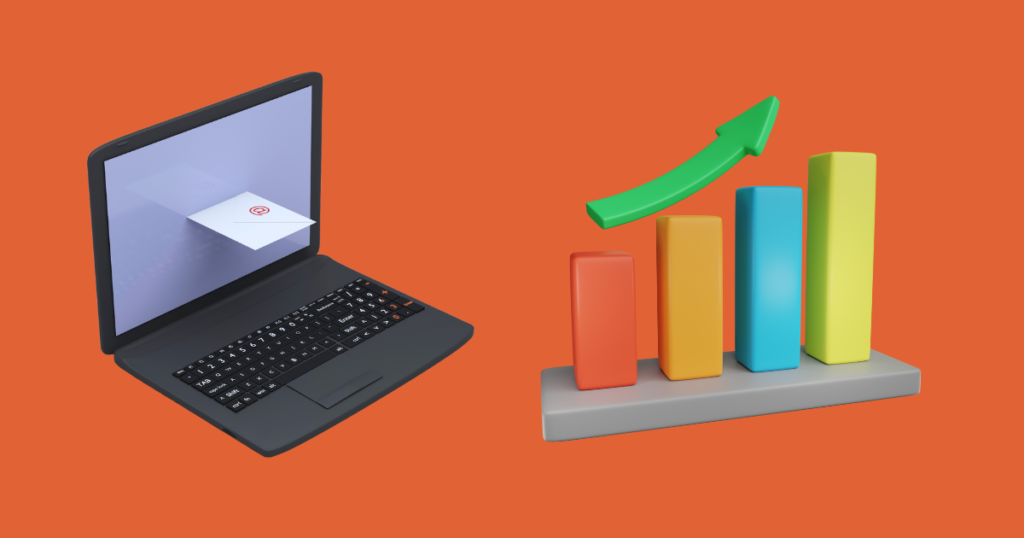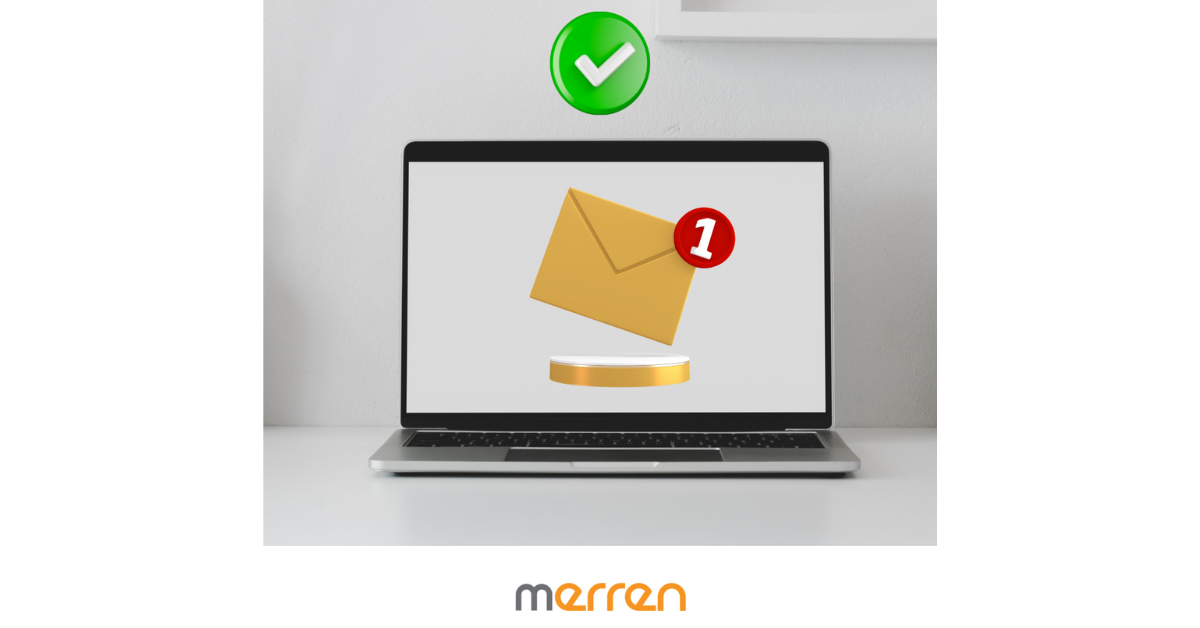Emails are one of the most common ways to distribute the survey to your target audience. The distribution of the survey URL is done by sending survey invitation emails . The email will include an online survey link, and then request the recipients to respond to the survey. The blog below, we’ll look through how survey invitation influences response rates and provide our top 5 survey email template that resulted in the desired outcomes and more responses to surveys. We’ll also discuss the methods of getting anyone to take the action you want them to do by sharing 5 Survey invitation emails that work. Let’s discuss the top survey email examples.
What Are The Reasons For Low Response Rate For Email Surveys?
Survey emails are a way to collect feedback and information from employees, customers, or any other type of group who a company or other organization would like to receive feedback. By sending out surveys companies can gather important data that can help them make better decisions.
When it comes to getting a high response rate for your survey, it’s important to consider the perspective of your target audience. There are two broad barriers that can prevent respondents from taking the time to complete your survey, and understanding these barriers can help you craft a more effective survey invitation email that maximizes survey responses. These are:
Low open rates of survey invitation email
One of the biggest barriers to getting a high response rate is low email open rates. If your survey invitation email isn’t being opened by your target audience, then they won’t even have the opportunity to complete your survey. There are several reasons why open rates might be low, including:
- Generic subject lines: If your survey invitation email has a generic survey email subject line that doesn’t clearly communicate the purpose or value of your survey, then recipients may be less likely to open it.
- Spam filters: If your survey invitation email triggers a spam filter, it may never even make it to your target audience’s inbox.
- Poor timing: If you send your survey invitation email at a time when your target audience is busy or overwhelmed with other emails, they may not have the time or mental bandwidth to open it.
- Unfamiliar sender: If your survey invitation email comes from an unfamiliar sender, recipients may be less likely to open it.
- Mobile formatting issues: If your survey invitation email isn’t optimized for mobile devices, it may be difficult for recipients to read and respond to on their smartphones or tablets.

The most important thing is to spark readers’ interest and get them to take the time to open your survey emails. That means you need to have an effective subject line that is meaningful enough to give readers some idea about what they can expect from the email. It must also motivate users to do something about it.
To overcome these barriers and increase email open rates, there are several best practices to follow:
- Use a clear and compelling subject line that communicates the purpose and value of your survey.
- Avoid spam triggers by using a reputable email service provider and avoiding spammy language and formatting.
- Send your survey invitation email at a time when your target audience is likely to have the time and mental bandwidth to engage with it.
- Use a recognizable sender name and email address to build trust with your target audience.
- Optimize your survey invitation email for mobile devices to ensure that it’s easy to read and respond to on any device.
By addressing these barriers and following best practices for email outreach, you can increase your open rates and maximize your survey response rates.
Low conversion from invite to survey completion
Even if your survey invitation email is opened, you may still experience low response rates if your email content isn’t compelling enough to convince respondents to start the survey, or if there are issues that cause respondents to abandon the survey before completing it.
One common reason why respondents may not start a survey is because the invitation doesn’t clearly communicate the purpose and value of the survey. Essentially, the customer is asking themselves- “why should I spend time for you unless there is something in it for me?” If the email doesn’t make it clear why the survey is important or how the respondent’s feedback will be used or how it will add value to them, they may not feel motivated to take the time to complete it.
Another reason why respondents may not start a survey is because the survey is too long or complex. If the survey takes too much time or effort to complete, respondents may feel overwhelmed and choose not to participate.
To overcome these barriers and increase survey completion rates, there are several best practices to follow:
- Clearly communicate the purpose and value of the survey in the email invitation, and emphasize how the respondent’s feedback will be used.
- Keep the survey short and focused, and avoid asking unnecessary or irrelevant questions.
- Test the survey software and design thoroughly to ensure that it’s user-friendly and free of technical issues.
- Make sure that the survey questions are clear, concise, and easy to understand.
- Offer incentives or rewards for completing the survey, such as a chance to win a prize or receive a discount on a product or service.
Another tactic that is often used successfully is to embed the first question of the survey within the survey invitation email. Why does that work? Because it is a great way to get someone to start on an activity, they feel compelled to finish it. However, if they still find your survey to be too long, boring, or tedious they would eventually stop, leading to low completion rate.
How does a survey invitation email influence the response rate to the survey?
A survey invitation email can have a profound impact on the rate of response to surveys. The email you use to invite people to participate in your survey is the very first impression they’ll get of the survey. Therefore, it is crucial to ensure that it is appealing and clear to comprehend. A few factors that affect responses include your subject line tone of the email and the length and depth that the questionnaire.
- Personalization: Personalized survey invitation email with the recipient’s name can improve customer experience and make them feel valued, increasing the likelihood of them taking the survey.
- Clarity: A clear and concise subject line that informs the recipient what the survey is about can encourage them to open the email.
- Incentives: Offering incentives, such as discounts or rewards, can motivate the recipient to take the survey.
- Timing: The timing of the email is important, sending the email at a convenient time when the recipient is most likely to respond can increase the response rate.
- Convenience: Making the survey easy to access and complete, with a clear and simple layout, can encourage the recipient to participate.
Overall, a well-crafted survey invitation email can increase the likelihood of a recipient responding to the survey, improving the overall response rate.We’ll look at some examples of online survey emails that have not just an excellent open rate, but also a decent response rate. Also, take note of the subject lines for survey emails which increased the response rate.

5 survey invitation email template that get a response
Template 1: Customer satisfaction survey invitation email example
Topic: Tell us how we did! Take our survey and get a special offer.
Body:
Hi <Customer Name> ,
We hope you’re enjoying your recent purchase of <PRODUCT NAME>! We’re committed to providing our customers with the best possible experience, and we’d love to hear your feedback.
Please take a moment to complete our brief satisfaction survey, and as a thank you, we’ll send you a special offer on your next purchase. It will only take 5 mins.
Your feedback helps us improve our products and services, so we appreciate your time and honesty.
Thank you,
What is the reason this customer satisfaction survey works?
- Simple, concise, and to-the-point
- Provides an estimate of the time it will take
- Explains the reason why the consumer should complete the survey
- Makes a clear offer of an incentive
Why is it not perfect?
Here are a few shortcomings of this email invite:
- Doesn’t provide any context for why the survey is being conducted or what the company hopes to achieve from it.
- Doesn’t offer concrete incentives or rewards for completing the survey- just a promise
- Doesn’t personalize the message beyond the recipient’s name
Template 2: Customer feedback survey invitation email example
Subject: How was your experience with us today?
Body:
Hi ,
We’re grateful for your trust in us! Can you spare 5 minutes to complete a simple survey about your experience with us? The survey is open until [date], and your answers will only be used for quality control purposes. We promise to keep your personal information confidential.
Thanks for your time and valuable feedback! We’re committed to providing you with the best service possible.
Thank you,
Why does this email work?
here are some reasons why this is a good email survey invite:
- The email is concise, clear, and easy to understand.
- The subject line is conversational and prompts the recipient to take action.
- Makes the recipient feel valued.
- Sets clear expectations about the survey’s length and purpose.
- Assures the recipient about the confidentiality of their personal information
- Thanks the recipient in advance for their time and feedback
- Does not nudge or biases the customer towards a favorable response and sets the tone for the recipient to share honest feedback
Why is it not perfect?
Here are a few shortcomings of this email invite:
- Doesn’t provide any context for why the survey is being conducted or what the company hopes to achieve from it.
- Doesn’t offer any incentives or rewards for completing the survey
- Doesn’t personalize the message beyond the recipient’s name
Template 3. Onboarding evaluation survey invitation email example
Subject: Your feedback matters! Get a $10 Amazon voucher.
Hi there!
Thanks for joining <Product Name>. To help us make our onboarding experience even better, we’d love to hear your thoughts. Did our team help you find what you were looking for?
Share your feedback by filling out this quick survey. As a thank you, we’ll send you a $10 Amazon voucher.
Thanks for your time and valuable feedback!
Thank you
Why does this email work?
here are some reasons why this is a good email survey invite:
• Starts with a friendly greeting that sets a conversational tone.
• Clearly states the purpose of the survey – to improve the onboarding experience.
• Asks a specific question that makes it clear what type of feedback is being sought.
• Promises that the survey will be quick, indicating that the recipient’s time is respected.
• Expresses gratitude for the recipient’s time and feedback.
Why is it not perfect?
Here are a few shortcomings of this email invite:
- Doesn’t personalize the message beyond the recipient’s name
- The email does not provide a specific deadline for completing the survey
- The email does not specify how the voucher will be delivered, which may cause confusion or concerns about data privacy.
Template 4. Retail store evaluation survey invitation email example
Subject: Get a 15% discount on your next purchase – just for sharing your feedback!
Body:
Subject: Get a 15% discount for sharing your feedback on our store!
Hi there!
Thanks for visiting our store today. We want to make sure we’re providing the best possible experience for all our customers, so we’d love to hear your thoughts.
Could you take just 10 minutes to share your feedback with us? As a thank you, we’ll give you a 15% discount on your next purchase.
If you have any concerns, please don’t hesitate to contact us. We appreciate your business and hope to see you in our store again soon!
Thanks for your time,
Why does this email work?
- It starts with a clear benefit (15% discount)
- The tone is friendly and inviting
- The purpose of the survey is stated clearly and concisely
- Email talks about recent (today’s) experience so is timely
Why is it not perfect?
Here are a few shortcomings of this email invite:
- Doesn’t mention how long the survey will take to complete
- Doesn’t personalize the email with the recipient’s name or any other information
- No mention of how the feedback will be used or what changes will be made based on it
Template 5. Example of Net Promoter Score (NPS) survey invitation email for a bank
The subject: How likely are you to recommend <Name of the bank>?
Body:
Hi there!
We hope you’re enjoying our services at <Bank Name>. Your feedback is important to us, and we’d love to know how likely you are to recommend our bank to your friends and family.
Please take a moment to fill out our short NPS survey. Your feedback will help us continue to provide the best possible experience for our customers.
Thank you for your time and loyalty to <Bank Name>!
Best regards,
Why does this email work?
This is a good survey invitation email because:
- Explains the purpose of the email in a concise and clear manner.
- The tone is friendly and inviting
- The purpose of the survey is stated clearly and concisely
Why is it not perfect?
- It doesn’t offer any incentive to the customer to take the survey (do note that often NPS surveys are disincentivized to avoid bias and also because these are really short surveys)
- It doesn’t provide any details how long it will take to complete
- Embedding the main NPS question as an HTML snippet in the email body or signature would get higher response rate
Based on the above examples, let’s try and generalize our learning on writing a good survey invitation email
How do you write an email invitation for a survey?
From getting the subject line right to making the value of participation in the feedback process clear, a survey email needs to get a lot of elements right. Here are some best practices on how writing a good survey invitation email to improve your response rates
- The subject line should be concise and persuasive: It’s just a repetition of what I said above. Make sure that the subject line clearly explains the reason for the email, and also highlights the benefits to the recipient.
- Customize the message: Send the email to the recipient by name. Make the message feel more personal by using a language which is friendly and welcoming. Include the recipient’s name when you have the information. Avoid making use of formal or general words.
- Make the email concise and concise: Make use of short sentences and simple, precise language to explain the reason you’re conducting the survey as well as what the person who will be receiving it will be able to expect. Avoid using technical terms that could be confusing.
- Use a simple call to action: Make sure to use a clear and compelling call-to-action to encourage people to complete the survey. For instance, “Take the survey now and help us improve our services”.
Optimize and test your emails: Try different subject lines, formats for emails and messaging to find which one is most effective for your intended audience. Test A/B to see how they compare different formats of email and messaging and then utilize data analytics to determine the response rate and improve it.
Conclusion
The best method to increase the reader’s openness and reaction rate is to provide some worth to readers. Humans are more likely to act when they are rewarded with something in exchange. Be careful not to deceive users by using subject lines that don’t correspond to the purpose of the email body. This could increase the open rate of your emails but some people may feel deceived and decide to unsubscribe. Use these survey email examples to obtain responses in large quantities.Sending, analyzing and reviewing survey results is now easier than ever. Make a no-cost test survey today and collect data to help you make better business choices.





